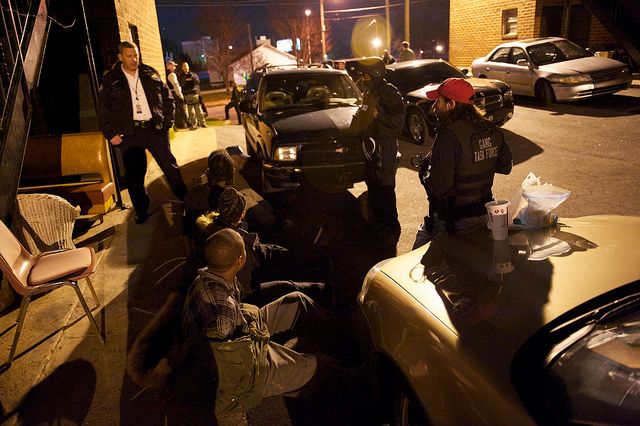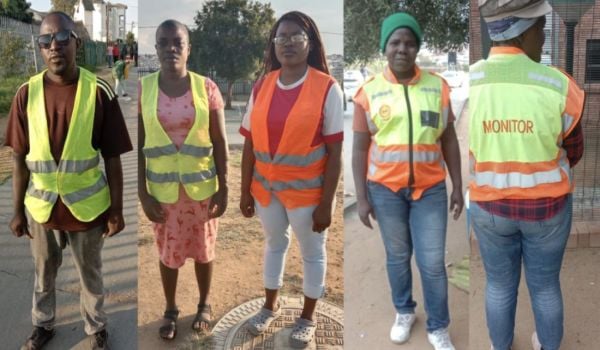Since the end of the Vietnam War, no other societal trend has been more consistent than the growth of the country’s prison population. For decades now, the U.S. has imprisoned people at a higher rate than any other nation on the planet.
Slowly but surely, we are starting to recognize the dangers of being the world’s leading prison guard. The economic burden is too much bear, the ineffectiveness of widespread incarceration has grown increasingly clear, and the moral implications of separating families en masse have become hard to deny. Especially in urban neighborhoods, where the majority of incarcerated Americans come from and return to.
As an urban planner focused on issues of neighborhood safety, I have been gratefully amazed by the way that the problem of mass incarceration has started to gain public attention. Society is finally recognizing that locking up so many people, for so long, for so many reasons, does little to make neighborhoods safer or more stable.
There is a major window of opportunity right now for rethinking the meaning of public safety, an opportunity I believe every available planner, placemaker and policy creator should jump on. It’s time to start concretely preparing for a version of America where our cities are not battlegrounds for the War on Drugs.
A clear signal of this opportunity came from Attorney General Eric Holder this past Monday, when he spoke at the annual meeting of the American Bar Association in San Francisco. Holder made headlines when he announced the Department of Justice will start to reverse course on harsh policies for non-violent drug crimes.
His speech was the first serious federal step toward acknowledging the failures of the War on Drugs, a move that focused on dismantling the war’s leading weapon: Mandatory minimum sentences, which have sent millions of low-level drug offenders behind bars and removed tremendous discretionary power from judges, juries and prosecutors.
Importantly however, Holder made it clear that rethinking mandatory minimums is only the beginning. His speech was not solely focused on initial policy fixes, but was a condemnation of the historic shift toward widespread incarceration. Drawing on arguments of both finances and fairness, Holder explained that the incarceration rate, which has increased by almost 800 percent since the dawn of the 1980s, “imposes a significant economic burden — totaling $80 billion in 2010 alone — and it comes with human and moral costs that are impossible to calculate.”
If a withdrawal from the War on Drugs becomes mainstream policy, it would have enormous implications not only for the criminal justice system but also for other urban systems, from public education to health care, that have become implicated in incarceration’s multigenerational cycle. As the possibility of significant reform unfolds, it is vital that those involved in community development and neighborhood transformation take this moment as a rallying cry.
For planners and concerned urbanists of all stripes, the pressing question becomes: What does public safety look like after the War on Drugs? If the trend away from mass incarceration gains momentum, what new frameworks will emerge to guide our efforts to make neighborhoods safe? Moreover, what role can planners, placemakers, community builders and urban interventionists play in starting to repair much of the damage done by mass incarceration?
In order to answer these questions in depth, it is necessary to understand the extent to which the War on Drugs has been waged in particular parts of our cities.
I know about Chicago, where over the course of the last decade, I have lived, worked and researched in many of the city’s neighborhoods most hard-hit by crime and incarceration.
In addition to being a major city with unacceptably high levels of violent crime, Chicago is also ground zero for locking up black men for drug offenses, with rates that have consistently been among the highest in the nation. As Holder explained in San Francisco, speaking to federal statistics, “in recent years, black male offenders have received sentences nearly 20 percent longer than those imposed on white males for similar crimes.” This sentencing discrepancy is on top of similar disparities in how race influences policing, arrest rates and prosecutions.
One of the major lessons from Chicago is that the War on Drugs is, to use a planner’s term, “place-based” in a totally devastating way, with a vastly disproportionate percentage of people convicted of low-level drug offenses coming from a relatively small number of urban neighborhoods, primarily African-American communities with other serious indicators of disadvantage.
Based on an analysis of data from the Illinois Department of Corrections, I found that for the last 10 years, roughly 12 percent of the Illinois prison population has come from a handful of neighborhoods on Chicago’s West Side, an area that averages less than 3 percent of the state’s entire population.
This means that as Illinois’ incarceration rate has skyrocketed over the last 35 years, certain neighborhoods have borne the brunt of the impact, creating what I refer to as high-incarceration neighborhoods. The so-called “revolving door” effect of having so many people coming and going between residential blocks and prison cell blocks has destabilized these neighborhoods in ways that we are only beginning to be understand and that could take decades to undo.
The racial component of incarceration trends can’t be understated. According to Harvard sociologist Robert Sampson, the incarceration rate for parts of Chicago’s predominantly black West Side are hundreds of times higher than Chicago’s highest-incarceration white community, a phenomenon that crime rates alone cannot explain.
For example, the neighborhood of West Garfield Park has an incarceration rate 42 times higher than Clearing, the highest ranked white community on incarceration. The difference in incarceration rates is 4,226 per 100,000 versus 103 per 100,000. As Sampson declares, “this is a staggering differential even for community-level comparisons — a difference in kind, not degree.”
Given this radical disparity, any scaling back of the War on Drugs will have very different meanings across different parts of my city, and every other U.S. city. If done well, the retreat from widespread imprisonment will be accompanied by proactive measure to expand opportunities, build relationships and share resources within the high-incarceration neighborhoods of cities like Chicago.
Crucially, any such work of neighborhood building will require expanding our understanding of public safety far beyond law enforcement alone. Police officers perform vital work on a daily basis. Yet by themselves, they cannot make communities safe.
If the War on Drugs has given us nothing else, it has taught us that the tools of law enforcement are not enough to create strong communities. Indeed, law enforcement can be only one dimension of public safety efforts. It is the force that steps in when street corners have been allowed to falter, when jobs have not been created, when human worth has not been validated, when community structures have not been repaired, and when development prospects have remained undeveloped.
As the window of opportunity for penal reform grows, our portfolio of public safety practices must also evolve. We must create new types of places, demand new patterns of investment, pursue new avenues of human potential and advance new policy practices that can support each of these measures.
Ryan Lugalia-Hollon has worked at major educational institutions across the City of Chicago, including the University of Chicago, Northwestern University and The Field Museum. He currently serves as a co-Executive Director for the ‘Youth Safety and Violence Prevention’ program of the YMCA of Metropolitan Chicago and is a Doctoral Candidate at the University of Illinois at Chicago. He was a member of Next City’s 2012 Vanguard.
Ryan Lugalia-Hollon has worked in youth development for over twenty years, including restorative justice, violence prevention, and trauma-informed care efforts in Chicago. He holds a PhD and Masters in Urban Planning and Policy from the University of Illinois at Chicago. He currently leads an education network in San Antonio, Texas. He is a Next City Vanguard.















